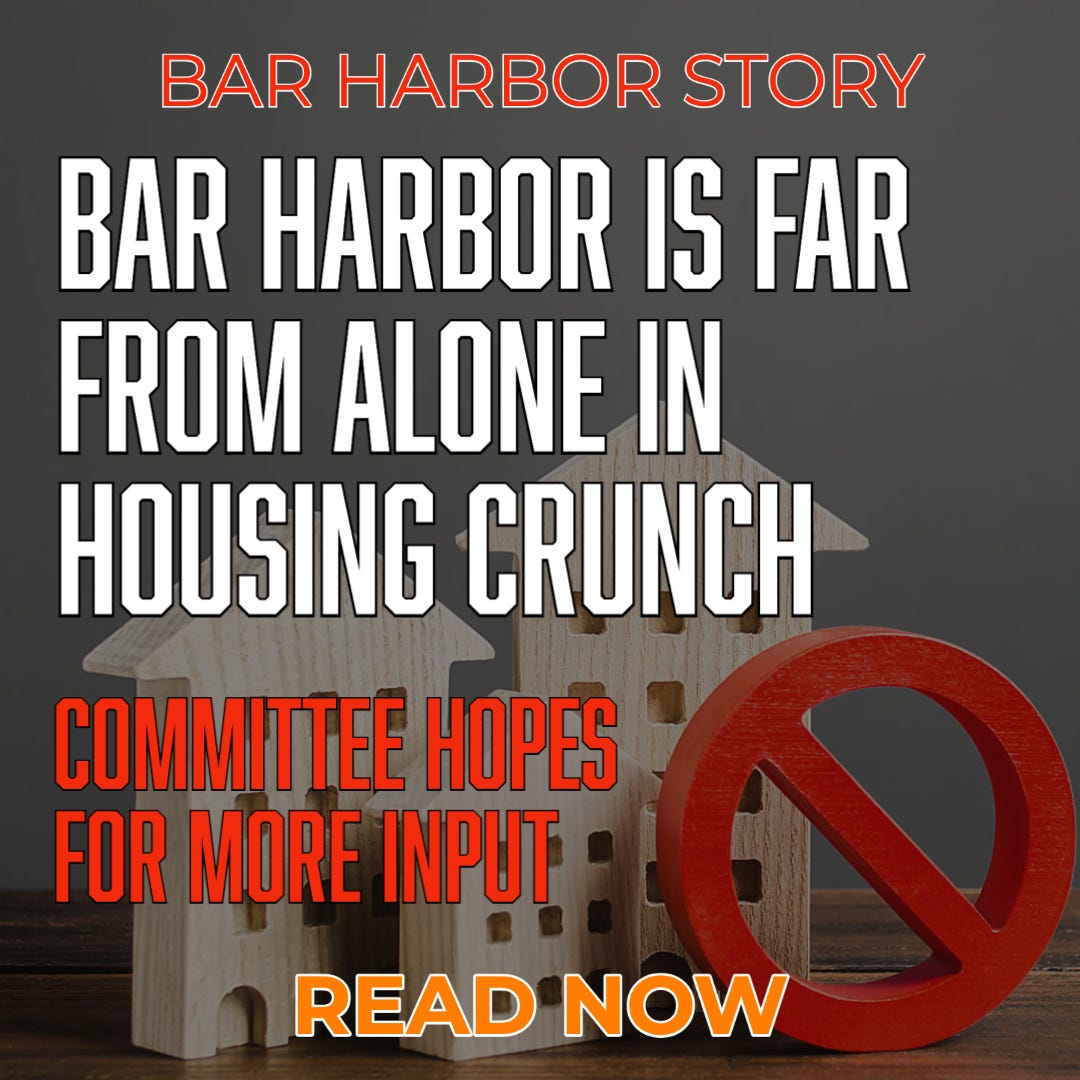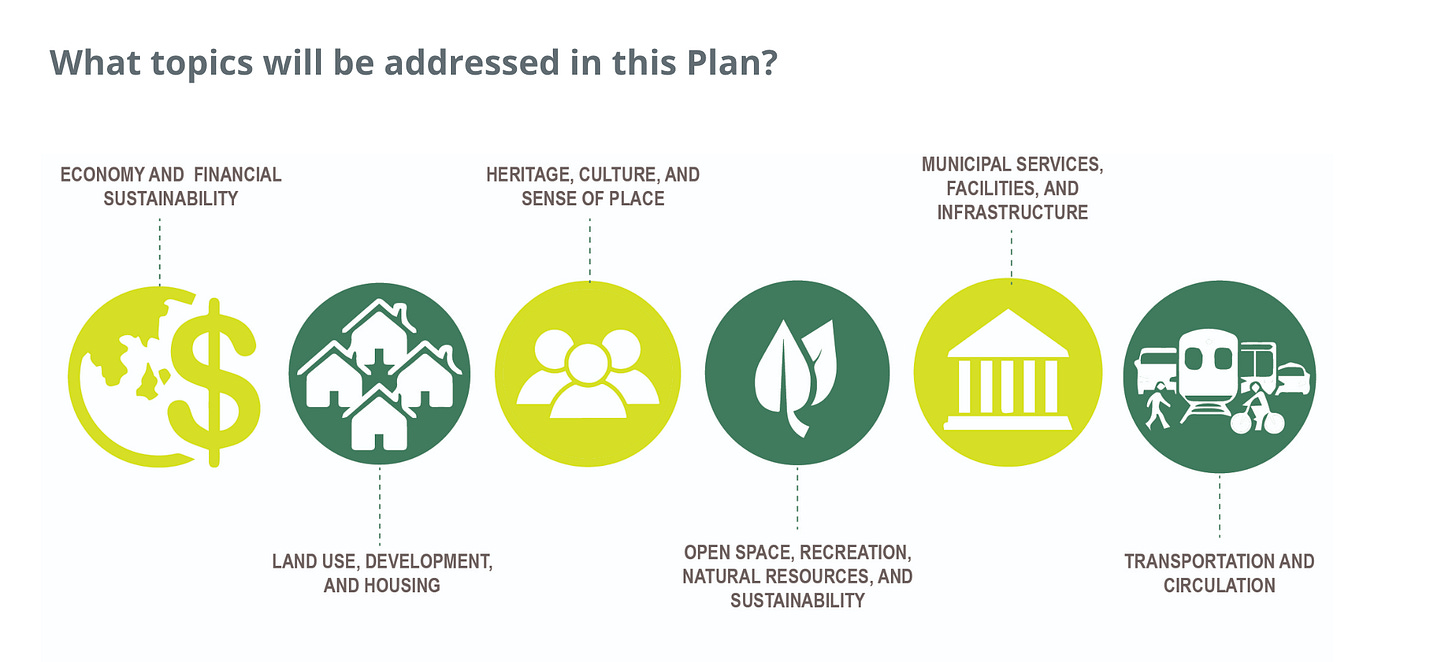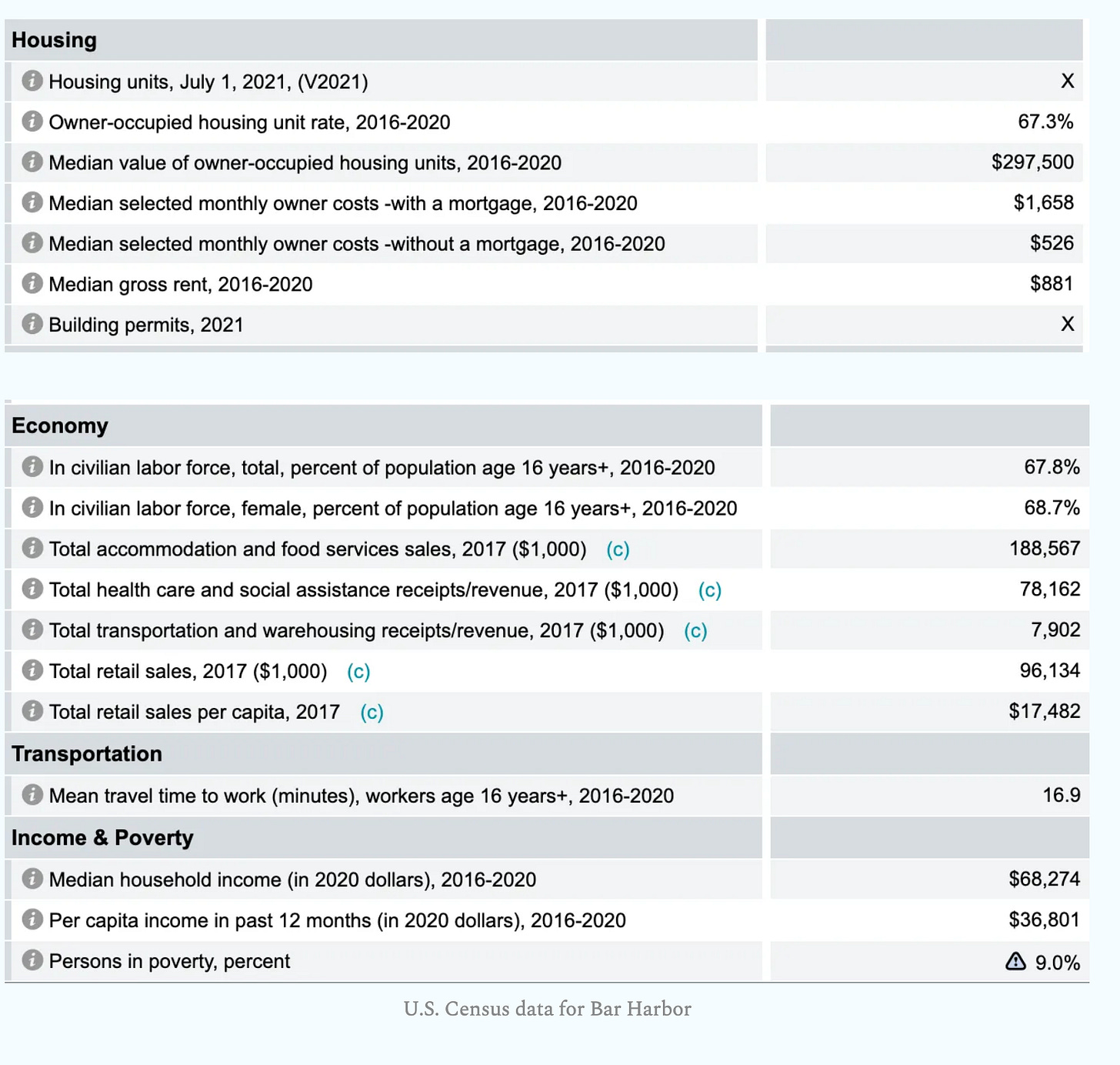BAR HARBOR—The Comprehensive Planning Committee met for two hours Thursday night, focusing on the recent housing study conclusions and how to share them with the public while also discussing an upcoming work session in March.
The public is invited to watch the work session, but not participate. More opportunities to participate in the process will occur in the future.
The plan, which is mandated to be updated by the state, is meant to be a roadmap for the town.
During the Thursday meeting, committee members discussed the demographics of those who attended public forums this past fall. Demographics of online respondents were not collected and some of the same people who responded online also attended one of the forums.
Committee member Michael McKernan worried about the committee releasing the results, which he felt seemed a bit homogeneous and where some respondents’ comments could be perceived of as insulting to certain portions of the community. He pointed to some comments about not having any more t-shirt shops as an example.
Town Planning Director Michele Gagnon said that if staff and committee members aren’t reading what they assume that segment of the population would express, does that mean that those people aren’t there in the forums or responding online? Or are they represented and the committee doesn’t realize it?
Chair Kyle Shank said that they are at the mercy of participation. The town is also at the mercy of how questions are phrased in surveys and even what is surveyed and what questions are asked.
Member Elissa Chesler said she wasn’t sure it was productive to dichotomize the town. Of the participants at the forums, about 33% said that they were retirees. Approximately 51% had master’s degrees or doctorates. A good portion made over $100,000 a year.
According to a demographic snapshot on the committee’s webpage, 33% of the town’s population is over 55 and the fastest growing age group is 25 to 34 year olds, which is also a group that tends to have children, which may have implications for the school’s future enrollment numbers. Currently, 13% of the population is between 25 and 34.
HOUSING AND TOURISM MANAGEMENT, BUT MOSTLY HOUSING
“The two main issues that we’re dealing with are housing and tourism management. I’m not saying tourism management with a negative connotation,” Gagnon said.
While Gagnon mentioned multiple times the need for future discussion about managing tourism, much of the committee’s discussion after a mammoth December 28 housing analysis study has focused on the housing needs of the community and the potential housing needs of an additional 600 units to deal with current needs and a projected population increase.
That has been linked to sustaining a workforce and therefore an economy in a town of roughly over 5,400 that closes down significantly during the off-season winter months but still must support infrastructure, school buildings and students, police, fire, and other aspects of community.
A recent New York Times article by Jenna Russell speaks to the increase of people from outside of Maine buying homes in Maine as well as Vermont and New Hampshire. She writes that there has been an influx of “more than 50,000 across the three states since April 2020, even as other Northeastern states — and especially large metro areas — have experienced a surge in out-migration.”
The article focuses on Searsport, another coastal Maine community, and mentions how difficult it is for employees to find housing, giving specifics of people’s living situations.
One lives with their parents. Another lives in a place without running water. The same happens in Bar Harbor. Multiple generations live together in many homes. Some homes are crumbling. Some have plastic over windows, foundation cracks and holes. In the summer, some workers camp in tents that aren’t always legally placed. Others might sleep in cars and vans. There are approximately 3,400 people in Maine who have no homes.
Russell writes,
“Population shifts — even small ones — carry high stakes in this rural, sparsely populated state, and across northern New England, where leaders have worried for years about a so-called “silver tsunami” with implications for the economy and the fate of rural communities. Maine had the oldest population in the nation in 2020 (Vermont and New Hampshire ranked in the top 10) and one of the lowest birthrates; the only consistent population growth has been among those 65 and older.
“But the latest census numbers suggest Maine has been thrown an unexpected lifeline. In a milestone few would have imagined a few years ago, it was the only state in the country where the median age declined from 2020 to 2021, the state economist said, largely the result of younger people moving in.”
That trend is also in Bar Harbor where those over 55 make up a third of the population, but a younger population is increasing. That could have implications for the school where enrollment had been decreasing. But it could also bottom out if there is nowhere to live.
The Maine State Housing Authority reported in September 2022 that many Mainers can no longer afford homes, writing,
“The average house price in Maine is unaffordable to the average income household in all Maine counties except Aroostook. Increased competition of homes due to persistent low inventory is pricing many first time homebuyers out of the market. This was exacerbated during the height of the pandemic when interest rates were lower and the pressure to secure housing was increased.”
Income, good paying jobs, construction costs, and material costs all factor into a situation that is multilayered and not a simple fix. Add to that the fact that there aren’t a lot of homes for sale.
Currently, there are 11 agent listings for homes in Bar Harbor. The lowest is a mobile home priced at $289,000. The next is a three-bedroom house on King Farm Drive for $430,000. Three of the listings are over $1,300,000.
In Hancock County the median sold price increased from $175,000 in 2010 to $355,000 in 2022. There were 769 sales in Hancock County in 2022. In 2010 there were 429.
Russell categorizes this as a frenzy that “has frozen many renters and would-be buyers in place, preventing them from entering the market. The squeeze affects not just waitresses and other low-wage earners, but a wide spectrum of workers.”
The median household income (in 2020 dollars) for Hancock County, Maine from 2016-2020 was $58,345. There are approximately 56,192 people in the county and almost 90% have lived in the same house for more than a year.
The Bar Harbor mean household income was approximately $10,000 more than the rest of Hancock County. There is no U.S. Census data for housing units in town as seen below.
The Comprehensive Planning Committee joked that perhaps Bar Harbor could light the way, be an example to the rest of Maine in trying to create housing that’s more affordable. Though there was laughter at the comment, the sentiment may not be a humorous one, but an aspiration.
Gagnon spoke about the strategic core plan that was developed and how in 2019 the town adopted the Housing Policy Framework, which created ten strategies to help with housing, most have been completed. She also explained that though it was a difficult ask, her department has requested a housing and community planner to focus on the problem. That may or may not be recommended by the Town Council, Warrant Committee.
MORE RESOURCES AND LINKS AND SOURCES
https://www.mainerealtors.com/wp-content/uploads/2023/01/Hancock22Data.pdf
https://www.barharbormaine.gov/501/Comprehensive-Plan
https://www.townhallstreams.com/stream.php?location_id=37&id=49643
https://www.barharbormaine.gov/517/Comprehensive-Planning-Committee
https://www.barharbormaine.gov/AgendaCenter/ViewFile/Agenda/_01112023-3121
https://legislature.maine.gov/doc/8866
















Carrie, I am so grateful for your clear, thorough and informative reporting. Thank you!!